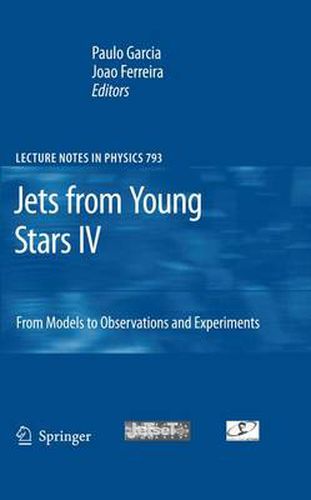Readings Newsletter
Become a Readings Member to make your shopping experience even easier.
Sign in or sign up for free!
You’re not far away from qualifying for FREE standard shipping within Australia
You’ve qualified for FREE standard shipping within Australia
The cart is loading…






This title is printed to order. This book may have been self-published. If so, we cannot guarantee the quality of the content. In the main most books will have gone through the editing process however some may not. We therefore suggest that you be aware of this before ordering this book. If in doubt check either the author or publisher’s details as we are unable to accept any returns unless they are faulty. Please contact us if you have any questions.
Astronomical jets are key astrophysical phenomena observed in gamma-ray bursts, active galactic nuclei or young stars. Research on them has largely occurred within the domains of astronomical observations, astrophysical modeling and numerical simulations, but the recent advent of high energy density facilities has added experimental control to jet studies.
Front-line research on jet launching and collimation requires a highly interdisciplinary approach and an elevated level of sophistication. Bridging the gaps between pure magnetohydrodynamics, thermo-chemical evolution, high angular resolution spectro-imaging and laboratory experiments is no small matter. This volume strives to bridge those very gaps. It offers a series of lectures which, taken as whole, act as a thorough reference for the foundations of this discipline. These lectures address the following:
* laboratory jets physics from laser and z-pinch plasma experiments, * the magnetohydrodynamic theory of relativistic and non-relativistic stationary jets, * heating mechanisms in magnetohydrodynamic jets, from the solar magnetic reconnection to the molecular shock heating perspectives, * atomic and molecular microphysics of jet shocked material.
In addition to the lectures, the book offers, in closing, a presentation of a series of observational diagnostics, thus allowing for the recovery of basic physical quantities from jet emission lines.
$9.00 standard shipping within Australia
FREE standard shipping within Australia for orders over $100.00
Express & International shipping calculated at checkout
This title is printed to order. This book may have been self-published. If so, we cannot guarantee the quality of the content. In the main most books will have gone through the editing process however some may not. We therefore suggest that you be aware of this before ordering this book. If in doubt check either the author or publisher’s details as we are unable to accept any returns unless they are faulty. Please contact us if you have any questions.
Astronomical jets are key astrophysical phenomena observed in gamma-ray bursts, active galactic nuclei or young stars. Research on them has largely occurred within the domains of astronomical observations, astrophysical modeling and numerical simulations, but the recent advent of high energy density facilities has added experimental control to jet studies.
Front-line research on jet launching and collimation requires a highly interdisciplinary approach and an elevated level of sophistication. Bridging the gaps between pure magnetohydrodynamics, thermo-chemical evolution, high angular resolution spectro-imaging and laboratory experiments is no small matter. This volume strives to bridge those very gaps. It offers a series of lectures which, taken as whole, act as a thorough reference for the foundations of this discipline. These lectures address the following:
* laboratory jets physics from laser and z-pinch plasma experiments, * the magnetohydrodynamic theory of relativistic and non-relativistic stationary jets, * heating mechanisms in magnetohydrodynamic jets, from the solar magnetic reconnection to the molecular shock heating perspectives, * atomic and molecular microphysics of jet shocked material.
In addition to the lectures, the book offers, in closing, a presentation of a series of observational diagnostics, thus allowing for the recovery of basic physical quantities from jet emission lines.